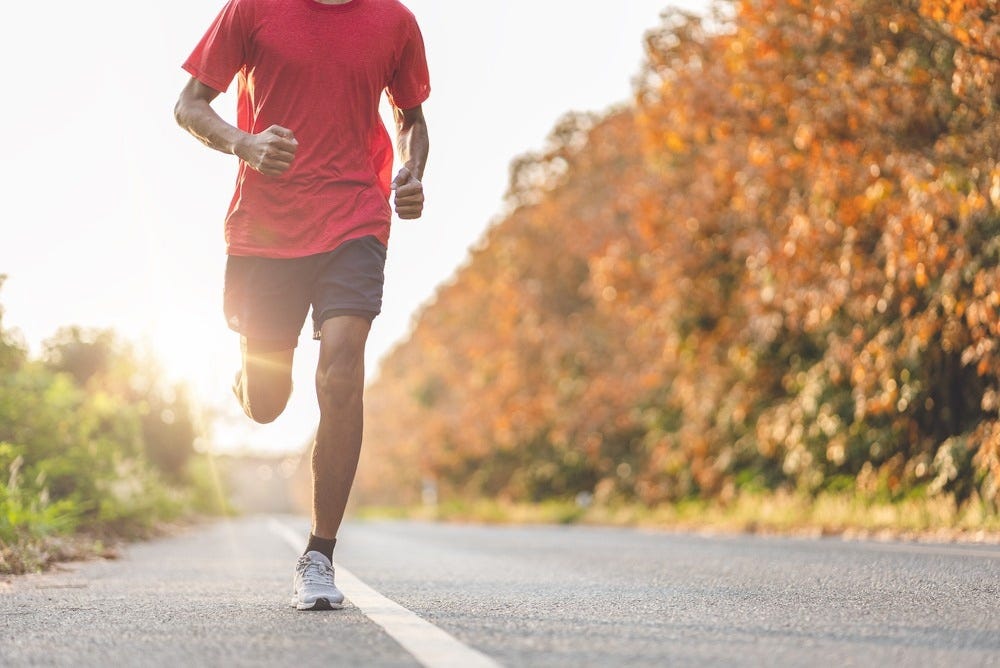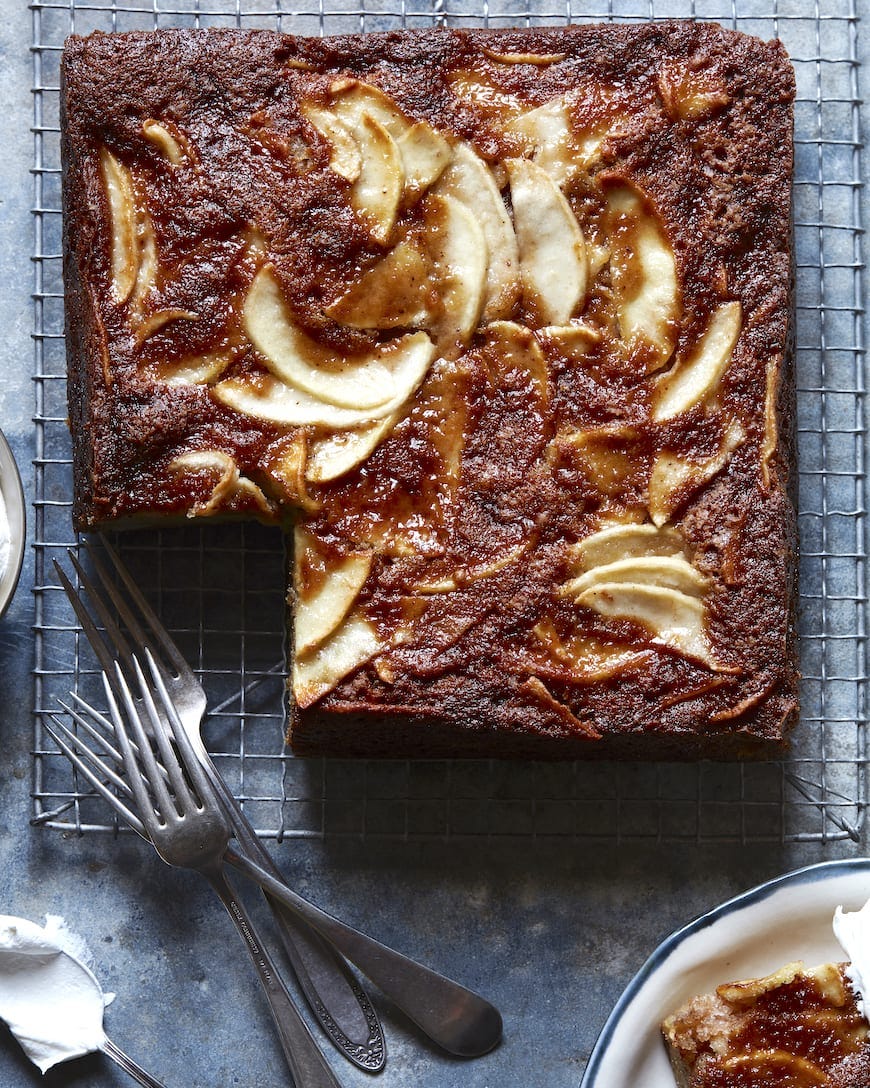Micah's Read of the Week, Vol. 115
10 ways to start running even if you kind of hate it, How Offset Smokers Became the De Facto Cooking Instrument of Texas Pitmasters, Meat sweats, New Yorker Cartoon of the Week, Recipe Corner, & more.
Hello, and welcome to Micah’s Read of the Week.

This is a newsletter filled with things Micah Wiener finds interesting. Check out the archive of previous newsletters here. Coming next week, the political edition that no one asked for.
10 ways to start running even if you kind of hate it
Ok, so it’s cooler now. That’s nice. Go spend some time outside. I don’t like to run. But, it’s the easiest way to get a good workout, especially when it’s pleasant outside.
I’ve signed up for a 10k next month. If you’re wandering around my neighborhood looking at spooky decorations, you’ll see me wheezing around. Say hi.
So, let’s get going. Here are ten moderately helpful tips for getting started.
Go slower. You can even walk sometimes.
You don’t have to go fast. You don’t even have to run the whole time.
Expect the struggle. Embrace the boredom.
The struggle of running is a shared experience with every other runner, from beginner to elite marathoner.
In his book, “I Hate Running and You Can Too: How to Get Started, Keep Going, and Make Sense of an Irrational Passion,” Leonard recommends giving yourself permission to struggle.
Another common refrain from people who don’t like running is that it’s boring. Leonard, 43, agrees. But to him, “Boredom is fertile. It’s a great place to put yourself to actually think, as opposed to something that’s commanding your attention every few seconds.”
Make a game out of it
She noticed that in a nearby neighborhood, residents had set up free libraries in their front yards. She started to organize her runs around them. By the end of her runs, she would have a pile of books to take home. She would also drop books off.
Run with a personal coach in your ear
Listening to a running podcast or guided running app during your run is like having a personal coach by your side. You can search for a variety of apps for runners of all levels.
Jess Mullen, 39, an administrative assistant in Philadelphia, says that running is “always a slog.” Listening to the NHS Couch to 5K podcast has helped. The episodes distract her from pain and offer reminders about form and breathing. The podcast is “a completely judgment free, nurturing way into running,” Mullen said.
Mullen’s cousin, 34-year-old Emily Kane, of Philadelphia, runs with Peloton’s guided workouts. “You kind of feel like you’re not by yourself,” she said.
Run with music or entertainment
Music, audio books and podcasts can also serve as entertainment and distraction on a long run. “At low to moderate intensities of running, the reduction in the rates of perceived exertion is around 10 percent” while listening to music, said Costas Karageorghis, a professor at Brunel University in London and author of the book, “Applying Music in Exercise and Sport.”
Head to the trails
Trail running allows a change of scenery and an escape into nature. It also gives you “permission to slow down,” said Mike Crowley, 59, of Conshohocken, Pa., who has competed in multiple 100-mile races, including the Eastern States 100 in Waterville, Pa.
Keep chasing the runner’s high
Not everyone experiences the runner’s high the same way, but research suggests the feeling has to do with endocannabinoids, which are the natural versions of THC and CBD.
Leonard, the outdoor adventure author, starts feeling the runner’s high after 40 to 50 minutes into a run. “It takes a lot of work to get to a point where running is relaxing,” he said.
Practice breathing
A common question beginners ask is how to breathe. Heather Knight Pech, a running coach for McKirdy Trained, said one of the first thing she tells her clients is to slow down their pace.
One breathing exercise Knight Pech recommends to warm up before running is box breathing — inhaling and pausing for three to five seconds before exhaling through the mouth and pausing for three to five seconds.
While running, Knight Pech suggests inhaling through the nose and mouth but exhaling deeper out of the mouth. The key is slowing it down and avoiding short and shallow breathing. “You do not want to be breathing short,” she said. “And if you are breathing short, that probably means you’re in some sort of stress.”
Find your running community
Matt Lindner, a 39-year-old Chicago marketing manager, ran high school cross-country and tried to get back into the sport at various points in his adult life with little success. “For me, there was just no point going out on a run when I could sit at a bar and drink beers,” Lindner said.
On a whim, Lindner signed up to run the 2017 Chicago Marathon for charity. He joined the Chicago Area Runners Association, a nonprofit organization with more than 11,000 members. Lindner credits the group for keeping him accountable and reigniting his passion for running.
Pick a fun, weird or quirky race
Running doesn’t have to be all business. Instead of signing up for a prestigious, big city race, 35-year-old Alex Quevedo of Irvine, Calif., chose the Star Wars Half Marathon in 2015. He wore a Stormtrooper tank top with white shorts for the race.
I did not sign up for the Star Wars Half. I am not a nerd.
How Offset Smokers Became the De Facto Cooking Instrument of Texas Pitmasters
Barbecue has come a long way from being cooked in a hole in the ground. But how did steel offsets, less than 40 years old, come to define the state’s style?
The steel offset smoker is ubiquitous in Texas barbecue. Its torpedolike cooking chamber, with a tall smokestack on one end and a low-riding firebox on the other, is the symbol of Texas-style barbecue in and outside the state. The gentle, controlled cooking environment it offers by way of indirect heat has become the preferred method for smoking meat, and new pitmasters are nearly unanimous in their adoption of it. Some would even deem it required to produce “traditional” Texas barbecue. But this is a relatively new allegiance, even younger than our devotion to smoked brisket. How did we get from digging our pits in the ground with a shovel to building them with torches and welders?
Barbecue in what is now the United States began as direct-heat cooking. Cooks would build a fire on the ground with a frame of sticks over it to cook meat. Later, they dug trenches or holes (that’s why we still call barbecue-cooking instruments “pits” today) and laid sticks across them for a cooking surface. Other than South Texas barbacoa, which is cooked in a covered hole in the ground, that’s the way Texas barbecue was prepared until the late nineteenth century.
When meat markets and barbecue shacks began selling barbecue in the late nineteenth century in Texas, they used similar pits, but as the restaurant culture developed, pits were built up instead of dug out.
In 1924, the brick building that housed Kreuz Market (and now houses Smitty’s) in Lockhart was built. I can’t find photo evidence, but according to the family, the indirect-heat brick pits and chimney were built then as well.
Massive rotisserie smokers were the contribution of the 1970s. J&R Manufacturing in Mesquite was founded in 1974, and it still builds the wood-fired Oyler rotisserie smokers patented by Herbert Oyler in 1968. A. N. Bewley Fabricators in Dallas began building its rotisserie smokers in 1971. Popular gas-fired rotisseries like Ole Hickory Smokers (1974) and Southern Pride (1976) also debuted their models in the seventies. The backyard smoker being pushed by retailers like Academy late in the decade was the 55-gallon drum cut in half with hinges and a grill grate added on. If you remember your grandfather cooking on one, there’s a good chance he didn’t have another option.
Finally we reach 1983, the year when the first generation of steel offset smokers was widely available to the public. Yes, the first companies building smokers with the same silhouette we use today were formed less than forty years ago. The founders of Pitts & Spitts say they built their first custom offset smoker from surplus oil pipe in the 1970s, but they opened their first retail store in Houston in 1983 and are still going strong. The Longhandle smoker pit was introduced the same year, and the ads were clear that it was “not an oil drum!”
That this design from such a short time ago has come to dominate Texas barbecue culture is a testament to its simplicity, efficiency, and ease of use when compared to cooking directly over coals. Propane tanks have largely replaced oil-pipeline materials for the construction of these steel offset smokers, but the basic design is the same. A whole generation of pitmasters has learned on nothing else. That’s not good news for those who love the direct-heat cooking practiced by fewer and fewer barbecue joints in Texas. But there’s no arguing that if you’re going to eat Texas barbecue today, chances are you’ll find an offset smoker nearby.
Are the Meat Sweats Fact or Fiction?
Speaking of barbecue… are the meat sweats real?
“While the term is not quite scientific, the biochemical process that results in excessive sweating after eating a lot of meat is quite real,” says dietitian Naudia Jones Bell, RD, CDN, the founder and CEO of Brooklyn Nutrition Practice. While “meat sweats” is often uttered as a joke (or a cry for help), it can also be explained by some basic biology.
What causes the meat sweats?
It’s harder for the body to break down protein than carbohydrates, says Natalie Rizzo, MS, RD, a dietitian and the author of Planted Performance. When you eat protein, 20%–30% of the calories ingested are used to digest it, compared with only 5%–10% for carbohydrates. Eating a lot of protein-heavy meats is probably raising body temperature through a process called diet-induced thermogenesis, says Jones Bell. Sweating is a natural response “so that the body can cool itself down,” she says.
Eating just 1 oz. of protein at a time “can result in a significant increase in body temperature,” Jones Bell says. That amount probably won’t cause you to sweat, though, and the limit will be different for everyone depending on the age, gender, and lifestyle factors which determine individual metabolic rates. It’s also important to note that the meat sweats could apply to any high-protein foods, like turkey, fish, chicken, and dairy, Rizzo says. One Twitter user agrees: “Everyone talks about meat sweats but nobody talks about cheese sweats.”
Can you avoid the meat sweats?
You already know, don’t you? “The best way to prevent meat sweats is to limit the quantity of meat consumed,” Jones Bell says.
Hard pass.
Beverages also play a role in the meat sweats. Boozing can increase the thermic effect of meats when consumed in tandem, so Jones Bell also advises you drink separately from protein-heavy meals.
So stick to Big Red?
Oops, too late. Now what do I do?
“Drink water to help regulate body temperature,” says Jones Bell. She also recommends wearing breathable and loose-fitting clothes and relaxing somewhere cool until the meat sweats pass.
Ok, that’s advice I can use.
New Yorker Cartoon of the Week
How the tables have turned.
Recipe Corner
Apple Cider Pork Pot Roast
The weather has changed. It’s time for a nice roast.
1 (5-pound) boneless pork shoulder (6 pounds if bone-in)
1 teaspoon kosher salt
½ teaspoon coarsely ground black pepper
1 tablespoon vegetable oil
2 yellow onions, cut into 2-inch (5 cm) wedges
2 cups (475 ml) apple cider
2 tart apples (I like Granny Smith), cored and cut into 2-inch (5 cm) cubes
2 sprigs fresh thyme or 1 teaspoon dried thyme
Preheat the oven to 325°F (165°C). Season the pork with the salt and pepper.
Heat the oil in a large Dutch oven over medium-high heat. Once the oil is hot, add the pork and brown well on all sides, 3 to 4 minutes per side.
Move the pork and add the onion wedges to the pot. Cook for a few minutes, letting them get a little color but being careful not to let them burn.
Return the pork to the pot, placing it on the bed of onions. Add the cider and 1 cup (235 ml) water and bring to a simmer, then wedge the apple pieces under the meat among the onions. Toss in the thyme.
Cover and transfer to the oven. Cook for 3 hours, or until the meat is fork-tender, shreds easily, and is a deep brown color; the apples will have caramelized.
Easy Cinnamon Apple Cake
I made this last weekend. It was pretty good. And it was easy.
4 cups sliced apples about 3-4 apples (peeling optional)
1 tablespoon fresh lemon juice
2 cups white sugar
3/4 cup coconut oil
2 large eggs
2 teaspoons vanilla extract
2 cups all purpose flour
1 ½ teaspoons baking soda
1 teaspoon ground cinnamon
1/2 teaspoon kosher salt
¼ teaspoon ground cloves
To prepare the apples, peel and core about 4 apples. Slice them into about 1/4 inch thick slices and place them into a large bowl. Pour the sugar over the apples and give them a quick toss with your hands and then add the lemon juice. Let the apples and the sugar sit for about 30-45 minutes. This process will soften the apples and dissolve the sugar.
Preheat oven to 350 degrees F.
Add the oil, eggs and vanilla to the apple mixture and stir together with a spoon.
Add the flour, baking soda, cinnamon, salt and cloves into the apple mixture. Combine with a spoon carefully until the dry mixture is just incorporated.
Spray a 9×9 or 9×13 baking dish with baking spray and line with parchment paper. Transfer the batter into the baking dish and bake in a preheated oven for 50-55 minutes for a 9×9 or 45-50 minutes for a 9×13, or until a knife can be inserted in the center and comes out clean.
Serve with freshly whipped cream.
Did Micah practice yoga this weekend?
Yes. 60 minutes Saturday at Searsana in Dripping Springs
That’s 38 in-person weekend classes in 41 weeks this year.
More Micah
Homebuying consultations: savewithmicah.com
Podcasts: Mind of Micah & Back Door Cover
Twitter: @micahwiener & @producermicah (Why two twitter accounts? It’s a long story)
Instagram: @micahwiener
LinkedIn: @micahwiener
TikTok: @mortgagemicah
Email: micahwiener@me.com
NMLS #2090158, equal housing lender.







